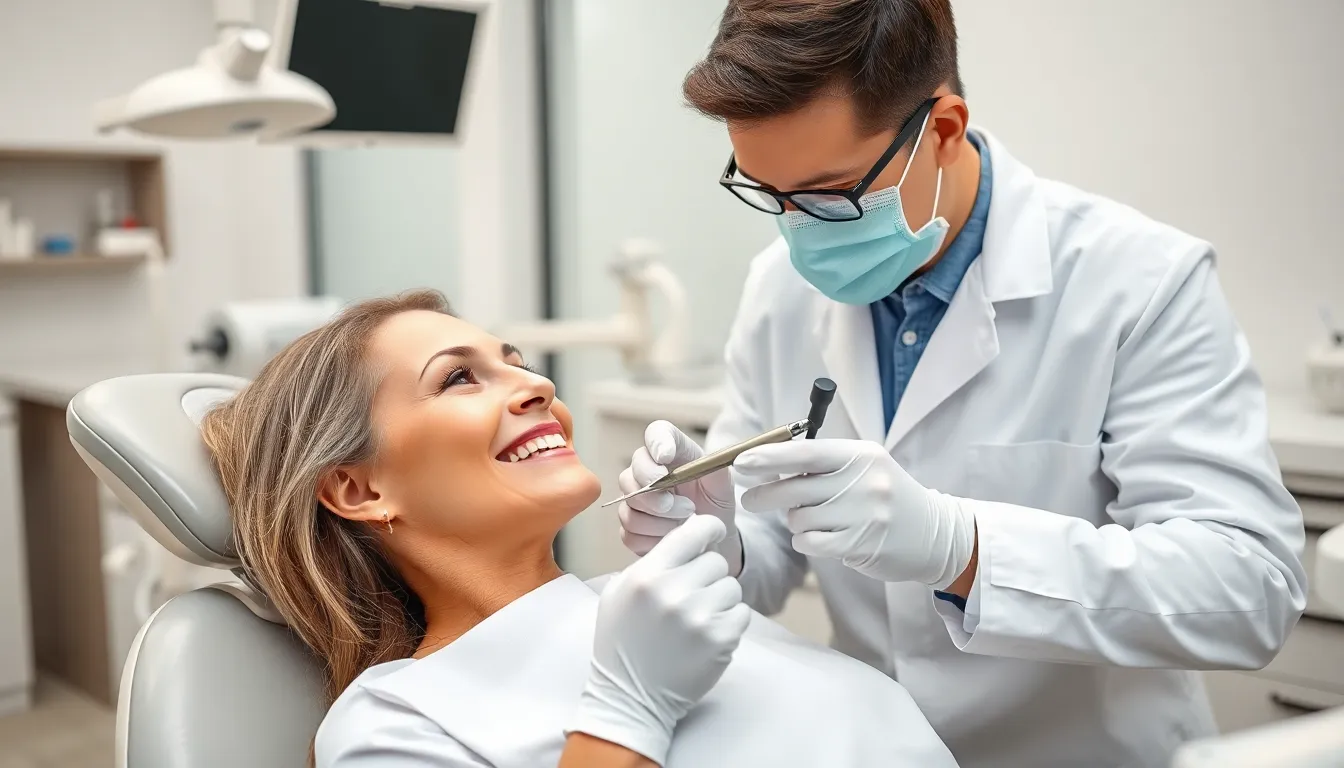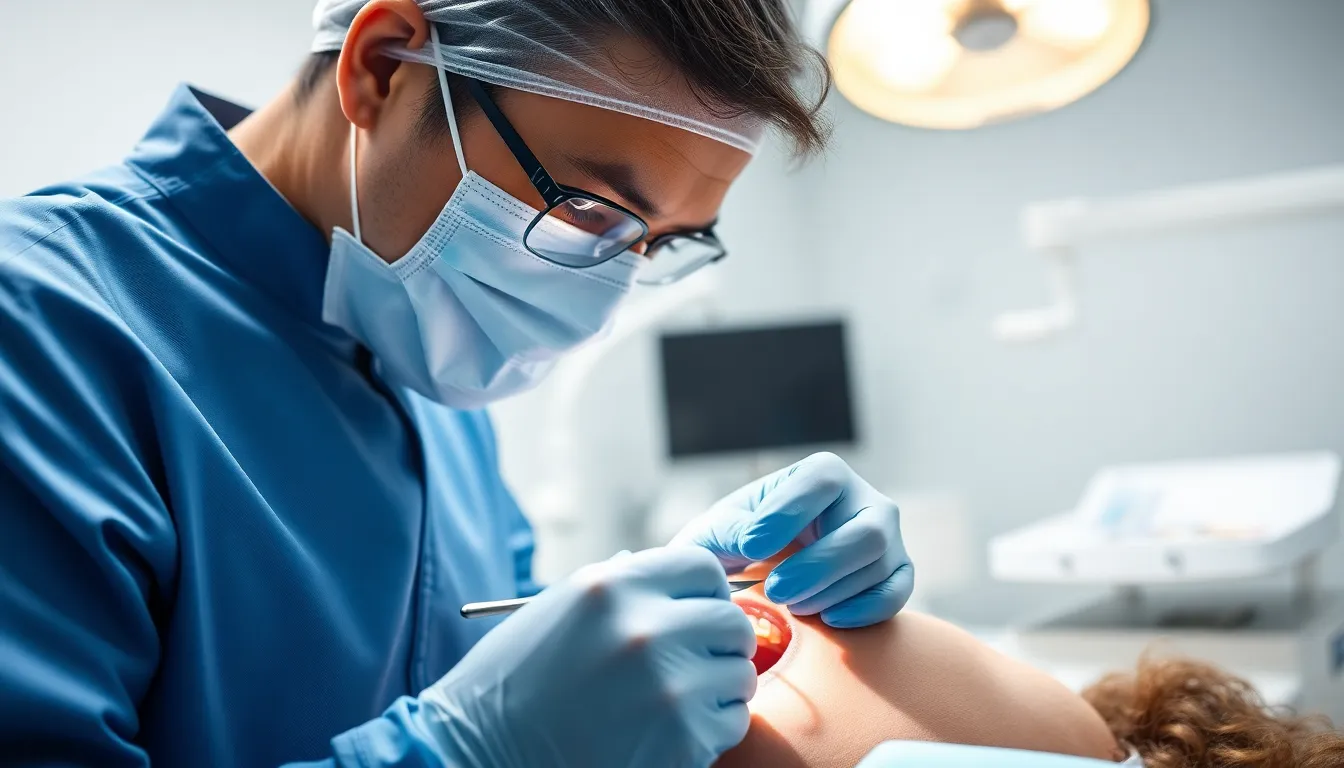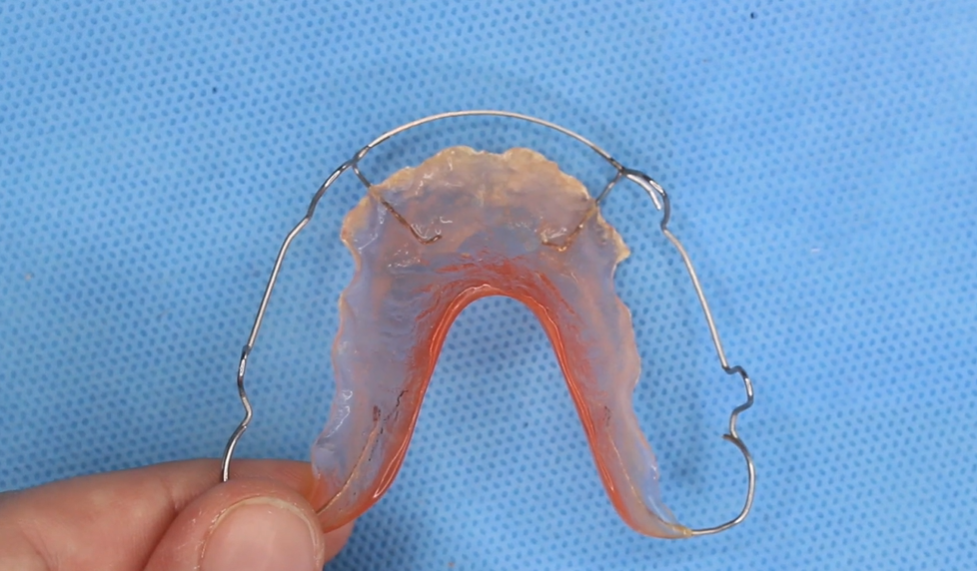If you buy through links on our site, we may earn a small affiliate commission to help support the blog - at no extra cost to you. It never influences our product selection process. Thank you!
Are you dealing with excessive gum tissue or a “gummy smile” that affects your confidence? A gingivectomy procedure might be the solution you’ve been searching for. This specialized dental treatment removes and reshapes excess gum tissue to improve both the appearance and health of your smile.
When performed by a skilled dentist or periodontist, a gingivectomy can transform your smile while addressing potential health concerns like periodontal disease. The procedure is relatively straightforward, with minimal recovery time and lasting results. Whether you’re considering it for cosmetic reasons or to treat gum disease, understanding what happens during and after this common procedure will help you make an well-informed choice about your oral health.
What Is a Gingivectomy Procedure?
A gingivectomy procedure involves the surgical removal of excess gum tissue from around your teeth. Dentists perform this treatment to eliminate diseased gum tissue or correct a gummy smile by removing overgrown gingiva. The procedure typically takes about 30-60 minutes depending on how much tissue needs to be removed.
During treatment, your dentist first applies a local anesthetic to numb the area. They’ll then use specialized dental tools such as a scalpel, laser, or electrosurgery equipment to precisely cut away and reshape the excess gum tissue. Many patients like Sarah, who came to our practice with concerns about her gummy smile, experience important aesthetic improvements after a gingivectomy.
“I’ve seen remarkable transformations in patients’ confidence after gingivectomies,” says Dr. Todd B. Harris. “Beyond the cosmetic benefits, this procedure often improves oral health by eliminating pockets where bacteria can hide.”
Your gums are reshaped to create a more natural, aesthetically pleasing gumline that properly frames your teeth. Modern techniques have made gingivectomies more comfortable and efficient than ever before, with most patients returning to normal activities within 24 hours after the procedure.
Common Reasons for Getting a Gingivectomy

A gingivectomy serves multiple important purposes in dental health and aesthetics. This specialized procedure involves removing and reshaping excess or diseased gum tissue to improve both oral health and smile appearance. Let’s explore the primary reasons patients undergo this groundbreaking treatment.
Gum Disease Treatment
Treating periodontal disease remains one of the most crucial medical reasons for a gingivectomy. The procedure effectively removes infected and overgrown gum tissue, significantly reducing harmful bacteria that cause gum disease. By eliminating these problematic areas, a gingivectomy creates a healthier oral environment and prevents further progression of periodontal issues.
“Many patients come to us with deep gum pockets that harbor bacteria and are difficult to clean,” explains Dr. Todd B. Harris. “After a gingivectomy, these patients can maintain their oral hygiene much more effectively, which stops the cycle of infection and inflammation.”
The reduction of gum pockets makes daily oral care substantially easier, helping you prevent additional damage and potential tooth loss. For patients with advanced periodontal disease, this procedure often marks a turning point in their battle against recurring gum infections.
Cosmetic Gum Reshaping
A “gummy smile” occurs when excessive gum tissue covers too much of your teeth, creating an unbalanced appearance. Cosmetic gingivectomy addresses this concern by carefully removing the excess tissue to reveal more of your natural tooth structure. This reshaping creates a more proportionate relationship between your teeth and gums.
The aesthetic benefits can be remarkable. Patients with previously hidden teeth often experience a dramatic transformation in their smile appearance. The procedure exposes more tooth surface, making teeth appear longer and creating a more harmonious smile line.
One patient, Sarah, shared her experience: “I was always self-conscious about my smile because my teeth looked so small. After my gingivectomy, I couldn’t believe the difference. My teeth were there all along, just hidden by my gums!”
Some patients also seek gingivectomy to address gum overgrowth caused by certain medications or health conditions. Medications for seizures, hypertension, and immunosuppression can sometimes cause abnormal gum growth. A gingivectomy effectively removes this excess tissue, restoring normal gum contours and making oral hygiene practices easier to maintain.
The Gingivectomy Procedure Step by Step

A gingivectomy is a straightforward dental procedure that typically takes between 30-60 minutes depending on how many teeth are involved. Understanding each phase of this process helps patients prepare mentally and physically for what to expect during their appointment.
Pre-Procedure Preparation
Your dentist or periodontist begins with a comprehensive evaluation of your gums to identify areas with excess tissue and develop a precise surgical plan. No special preparation is required from you before the appointment, though you’ll need to arrange for someone to drive you home if sedation dentistry is part of your treatment plan. The procedure starts with the administration of local anesthesia to numb your gums and surrounding tissues, which takes approximately 5-10 minutes to take full effect.
Dr. Todd B. Harris notes, “I always ensure my patients understand exactly what will happen during their gingivectomy. This pre-procedure consultation significantly reduces anxiety and helps create a more comfortable experience.”
During the Procedure
Once your gums are completely numb, your surgeon makes precise incisions to remove the excess or overgrown gum tissue using either a scalpel or laser. A suction tool continuously removes excess saliva throughout the procedure to maintain a clear operating field. Your surgeon carefully reshapes your gum line by trimming and vaporizing leftover tissue, creating a natural contour around your teeth.
Sutures may be placed to secure the remaining gums in position after tissue removal. The treated area receives thorough cleaning with saline and antiseptic rinses to prevent infection. Some cases require application of a periodontal dressing that protects the surgical site without extending onto uninvolved mucosa, which could cause irritation.
One patient shared, “I was surprised by how quick and painless my gingivectomy was. The dentist explained each step as it happened, which made me feel at ease throughout the entire 45-minute procedure.”
Post-Procedure Recovery
Your gums typically heal within about one week following a gingivectomy. Common side effects include soreness, swelling, and mild bleeding, which generally subside within three to four days after the procedure. You’ll receive detailed post-operative instructions covering proper oral hygiene practices and identifying irritants to avoid around the surgical site.
If applied, the protective dressing helps shield your gums during healing and covers the gingival margin without interfering with tongue movement or the floor of your mouth. Complications are rare but might include infection or delayed healing in some cases. Since gingivectomy is an outpatient procedure, you can return home immediately afterward.
Types of Gingivectomy Techniques

Gingivectomy procedures employ several distinct techniques, each offering unique benefits for removing excess gum tissue. The choice of technique depends on your exact oral health needs, the dentist’s expertise, and available technology at the practice.
Traditional Scalpel Method
The traditional scalpel method remains the most widely practiced gingivectomy technique among dental professionals. During this procedure, your dentist uses a surgical scalpel to make precise incisions with well-defined margins, removing the excess gum tissue effectively. This technique provides fast healing without lateral tissue damage, though it typically causes more bleeding which may temporarily reduce visibility during the operation. Local anesthesia ensures your comfort throughout the process. Dr. Todd B. Harris notes, “Many of my patients appreciate the traditional scalpel approach for its reliability and predictable results, especially for more complex cases where precision is paramount.”
Laser Gingivectomy
Laser gingivectomy represents an advanced approach that uses focused light energy to excise gum tissue with exceptional precision. This technique offers important advantages including minimal bleeding, reduced post-operative discomfort, and simultaneous sterilization of the tissue as it cuts. The laser effectively eliminates bacteria at the treatment site, resulting in less inflammation during the healing process. Clinical studies demonstrate that laser-treated areas show fewer inflammatory cells compared to traditional methods, indicating potentially better healing outcomes. One patient, Sarah, shared her experience: “I was amazed at how comfortable the laser procedure was—I experienced almost no bleeding and was back to my normal routine the very next day.”
Electrosurgery Method
Electrosurgery utilizes controlled electric current to remove excess gum tissue while simultaneously cauterizing the area. This technique stands out for its ability to minimize bleeding during the procedure, creating a clearer surgical field for your dentist. The electrosurgery method proves particularly useful for patients with exact bleeding concerns or when enhanced visibility is crucial for complex cases. Though less commonly used than scalpel or laser approaches, electrosurgery offers distinct advantages in certain clinical situations. The procedure may cause slight thermal effects on surrounding tissues, potentially resulting in a somewhat longer healing period compared to other methods.
Benefits and Risks of Gingivectomy

A gingivectomy offers important advantages for both health and cosmetic concerns while carrying some potential risks. This surgical dental procedure involves removing part of the gum tissue to treat disease or enhance smile aesthetics.
Advantages of the Procedure
Gingivectomy provides effective treatment for gum diseases like gingivitis and periodontitis by removing diseased or inflamed tissue. The procedure reduces infection risk, pain, and bleeding while creating better access for cleaning teeth. Removing gum pockets prevents future plaque and tartar buildup that can worsen gum disease.
Many patients seek gingivectomy for cosmetic improvement of a “gummy smile.” Dr. Todd B. Harris notes, “I’ve seen remarkable transformations in patients’ confidence after correcting excessive gum display. One patient mentioned she hadn’t smiled fully in photos for years until after her gingivectomy.”
The procedure restores physiologic gum contour, creating a more balanced appearance that frames teeth effectively. Gingivectomy also provides access to sub-gingival areas for treating decay or placing dental crown margins, improving the long-term prognosis for affected teeth.
Potential Complications
Pain and discomfort commonly occur during recovery, though modern techniques have minimized these effects. Bleeding and infection pose short-term risks immediately following surgery if proper aftercare instructions aren’t followed carefully.
Gum sensitivity or recession may develop as removing tissue can expose sensitive tooth roots. This sensitivity typically diminishes over time but requires monitoring during healing. Cosmetic concerns arise if the procedure is overdone, potentially resulting in an uneven gum line or excessive tooth root exposure.
Recovery necessitates time and meticulous oral hygiene practices to ensure proper healing without complications. Most patients experience complete healing within two weeks, though individual recovery times vary based on the extent of tissue removal and personal healing factors.
Recovery Timeline After a Gingivectomy

Immediate Postoperative Period (First 24-48 Hours)
The first days after your gingivectomy procedure involve managing mild to moderate bleeding and swelling. Applying gauze directly to the affected area helps control bleeding effectively. Cold compresses reduce swelling when applied intermittently to your cheeks. Pain typically remains manageable with over-the-counter medications recommended by your dentist. Dr. Todd B. Harris notes, “Most of my patients express surprise at how comfortable they feel even in these initial hours after the procedure, especially when following our post-care instructions carefully.”
First Week
Healing begins visibly during the first week with noticeable gum tissue redness and tenderness. Your dentist will schedule a follow-up appointment during this time to monitor your recovery progress. Gum tissues start their healing process and gradually reattach to your teeth. Many patients report feeling significantly better by day 5, though maintaining gentle care around the surgical site remains essential.
Two Weeks to One Month
Important healing occurs during this phase as new gum tissue grows and integrates. Swelling and redness decrease considerably throughout this period, while your gum line begins to stabilize into its new contours. You can generally resume a normal diet after two weeks, but continuing gentle oral hygiene practices prevents disrupting the healing tissues. Sarah M., a recent gingivectomy patient, shared, “By week three, I barely remembered I’d had the procedure—my mouth felt normal again, and I was already enjoying the improved appearance of my smile.”
One to Three Months
Complete maturation of your gum tissue takes up to three months following the procedure. Your gums continue their remodeling process during this period, establishing a healthy, stable gum line. Maintaining excellent oral hygiene supports full recovery and prevents potential infections or complications. Regular dental check-ups during this period ensure your healing progresses as expected.
Key Recovery Tips
- Avoid smoking completely during your healing period as it significantly delays tissue regeneration
- Follow a soft food diet initially, focusing on nutritious options like yogurt, smoothies, and well-cooked vegetables
- Practice careful dental hygiene with gentle brushing techniques and avoiding direct contact with operated areas in the first week
- Attend all scheduled follow-up appointments to ensure proper healing progression and address concerns immediately
- Use prescribed antimicrobial mouth rinses to keep the surgical area clean without mechanical disruption
The complete healing process typically spans from basic tissue healing within one week to full gum stabilization at three months. Your individual timeline varies depending on the extent of your procedure and personal health factors, but consistent adherence to postoperative care instructions substantially improves outcomes and minimizes complications.
Cost Considerations for Gingivectomy Procedures
Gingivectomy procedures typically cost between $200 and $400 per tooth when paying out-of-pocket. Many dentists offer reduced rates for treating multiple teeth (up to three) in a single session, making the overall treatment more affordable. Treatment costs remain consistent whether using traditional scalpel techniques or advanced laser methods, though the total expense varies based on the number of teeth requiring treatment.
Insurance Coverage for Gingivectomy
Insurance companies generally cover gingivectomy procedures when performed for medical reasons. Treatments addressing periodontal disease or injury repair usually qualify for coverage under most dental insurance plans. Cosmetic gingivectomies, but, aren’t typically covered by insurance providers. Before scheduling your procedure, contact your insurance company to verify coverage details and understand potential out-of-pocket expenses.
Factors Affecting Gingivectomy Costs
Several factors influence the final cost of your gingivectomy procedure:
- Number of teeth: Treatment costs multiply based on how many teeth require gum recontouring
- Technique used: Laser gingivectomy offers benefits like faster healing but may cost more than traditional methods
- Case complexity: Severe gum disease or extensive cosmetic correction increases treatment time and cost
- Geographic location: Dental procedure pricing varies significantly between cities and regions
- Provider expertise: Specialists with advanced training may charge premium rates compared to general dentists
“Many patients are surprised by the affordability of gingivectomy procedures, especially considering the important impact they have on both oral health and smile aesthetics,” notes Dr. Todd B. Harris. “I’ve seen patients who delayed treatment due to cost concerns, only to discover their insurance covered a substantial portion when the procedure addressed active gum disease.”
Cost Comparison of Gingivectomy Techniques
| Technique | Cost Per Tooth | Total Treatment Range | Key Benefits |
|---|---|---|---|
| Traditional Scalpel | $200-$400 | $200-$3,000 | Precision, reliability |
| Laser | $200-$400 | $500-$3,000 | Less bleeding, faster healing, less discomfort |
| Electrosurgery | $200-$400 | $200-$3,000 | Minimal bleeding, better visibility |
Laser gingivectomy, while comparable in per-tooth cost to traditional methods, offers important advantages including reduced discomfort and faster recovery times. The total treatment cost ranges from $500 to $3,000 depending on your exact case complexity and the number of teeth involved. This relatively low-cost procedure provides substantial benefits for both gum health improvement and aesthetic enhancement with minimal recovery time.
Conclusion
A gingivectomy can transform both your oral health and smile aesthetics with minimal downtime. Whether you’re addressing gum disease or seeking cosmetic improvements for a gummy smile modern techniques offer comfortable efficient answers.
Recovery typically spans just two weeks with complete tissue maturation occurring within three months. While costs vary based on technique and number of teeth treated insurance often covers medically necessary procedures.
By choosing an experienced dental professional and following proper aftercare instructions you’ll maximize your results. Your investment in this straightforward procedure delivers lasting benefits making it a valuable option for anyone looking to enhance their smile and overall oral wellness.
Frequently Asked Questions
What is a gingivectomy procedure?
A gingivectomy is a dental procedure that removes and reshapes excess gum tissue. It addresses issues like a “gummy smile” or gum disease by surgically trimming overgrown gum tissue, typically taking 30-60 minutes to complete. The procedure is performed using local anesthesia and specialized tools such as scalpels, lasers, or electrosurgery equipment.
How long does recovery from a gingivectomy take?
Recovery from a gingivectomy typically takes about two weeks. Most patients can return to normal activities within 24 hours, though mild soreness and swelling may persist initially. Complete healing and maturation of gum tissue occurs over about three months. The exact timeline varies based on the extent of tissue removal and individual healing factors.
Is a gingivectomy painful?
Most patients experience minimal discomfort during a gingivectomy due to local anesthesia. Post-procedure, mild to moderate pain can typically be managed with over-the-counter pain medications. Modern techniques have made the procedure more comfortable, and most patients report that any discomfort subsides within a few days after treatment.
What are the main reasons to get a gingivectomy?
Gingivectomies are performed for both medical and cosmetic reasons. Medically, they treat gum disease by removing infected tissue and reducing deep gum pockets that harbor bacteria. Cosmetically, they correct “gummy smiles” by removing excess tissue to reveal more tooth structure, creating a more balanced smile. Some patients also need the procedure to address gum overgrowth caused by medications.
What techniques are used for gingivectomy procedures?
Three main techniques are used for gingivectomies: traditional scalpel method, laser gingivectomy, and electrosurgery. The scalpel method offers precision and reliability. Laser gingivectomy provides minimal bleeding and reduced post-operative discomfort. Electrosurgery minimizes bleeding and enhances visibility during complex cases. The technique choice depends on patient needs and dentist expertise.
How much does a gingivectomy cost?
A gingivectomy typically costs between $200 and $400 per tooth when paid out-of-pocket, with potential discounts for treating multiple teeth. Insurance often covers medically necessary procedures but not cosmetic ones. Costs vary based on the number of teeth treated, technique used, case complexity, geographic location, and provider expertise.
What are the benefits of a gingivectomy?
Gingivectomy procedures effectively treat gum diseases like gingivitis and periodontitis, reducing infection risk and improving cleaning access. Cosmetically, they correct “gummy smiles,” revealing more natural tooth structure and creating a balanced smile. Many patients report significant confidence boosts following treatment, and modern techniques have made the procedure comfortable with quick recovery times.
Are there any risks associated with gingivectomy?
While gingivectomy is generally safe, potential complications include pain, bleeding, gum sensitivity, and infection. There’s also a small risk of gum tissue not healing properly or growing back unevenly. These risks are minimized when the procedure is performed by an experienced dental professional and when patients carefully follow all aftercare instructions.
What does the recovery timeline look like?
The first 24-48 hours involve managing mild bleeding and swelling. During the first week, visible healing begins, with a follow-up appointment to monitor progress. By two weeks, patients can typically resume a normal diet. Complete maturation of gum tissue occurs by three months. Proper aftercare significantly improves outcomes and minimizes complications.
How do I know if I need a gingivectomy?
You might need a gingivectomy if you have a “gummy smile” (excessive gum tissue showing when you smile), deep gum pockets from periodontal disease, gum overgrowth due to medications, or difficulty maintaining oral hygiene due to gum shape. A comprehensive dental evaluation is necessary to determine if the procedure is appropriate for your specific situation.






